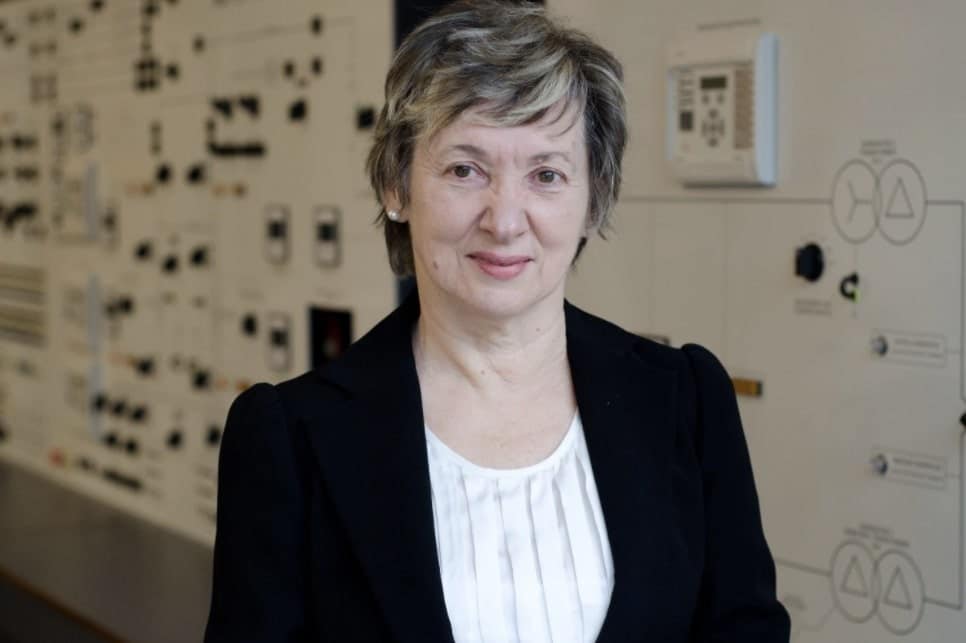The scoop on 5G: experts separate fact from fiction

Professor Branka Vucetic.
5 fast facts on 5G
Professor Branka Vucetic, is an expert in 5G and is the Director of the Centre for IoT and Telecommunications. She has made significant contributions to the fields of coding and wireless communications with much of her work underpinning the wireless technologies we use today.
She believes 5G will revolutionise the Internet, but says any claims that it causes or spreads COVID-19 are scientifically baseless.
What is 5G?
“5G’s commercial deployment began in 2019 and cellular networks are now being rolled out worldwide. It is the fifth generation of cellular technology which will enhance and eventually replace the current 4G networks for cellular mobile communications,” said Professor Vucetic who is an academic within the School of Electrical and Information Engineering.
“5G will increase the mobile network capacity, connect many more devices to the Internet, significantly enhance data rates, minimise network delays and deliver ultra-high reliability.
“Beyond improving user experience with streaming movies, 5G will power new use cases including virtual/augmented reality services for education, retail, healthcare and construction.
“Smart cities will benefit from 5G’s capacity to connect many devices that generate large amounts of data in short periods of time. These devices should be able to work reliably and securely in high-density areas like factories, airports and urban centers.
“5G will have the highest impact in providing connectivity for industrial automation, self-droving vehicles, remote healthcare and smart grids.”
5G radiation and its health effects
“5G operates in two parts of the radio spectrum, microwave and millimetre wave bands. The microwave band of 5G is below 6GHz, which is basically the same as for the earlier generation networks: 2G, 3G and 4G,” said Professor Vucetic.
“5G also use higher frequencies in the millimetre wave spectrum, between 24 GHz and 50GHz. Both microwave and millimetre bands belong to non-ionizing radiation, which doesn’t have enough energy to damage DNA, unlike the much higher ultraviolet rays (from the sun), X-rays and gamma rays.
“The most well-established biological effect of these of microwave and millimetre wave radiation is heating. High power radiation in these bands can cause rise in temperature and burns. However, the power of communication towers and mobile phones are well below the levels that cause temperature changes.”
What cellular and health agencies say about 5G health effects?
“The International Commission on Non‐Ionizing Radiation Protection sets the guidelines for installation of cellular communication towers. It states there is not a single scientifically substantiated adverse health effect that can be attributed to a standard 5G installation,” said Professor Vucetic.
“Similarly, the World health Organisation (WHO) states that, “to date, no adverse health effects from low level, long term exposure to radiofrequency or power frequency fields have been confirmed, but scientists are actively continuing to research this area”.”
“In the US, the Federal Communications Commission states that, “the available scientific evidence to date does not support adverse health effects in humans due to exposures at or under the current limits”.
5G and COVID-19: claims are scientifically baseless
“There have been some conspiracy theories circulated via social media about 5G causing or spreading COVID-19. These claims are scientifically baseless. Viruses of any type cannot be transmitted via radio waves,” said Professor Vucetic.
“A widely circulated claim that Wuhan, where the virus was first detected, was the first city in the world to deploy 5G is not correct either. 5G was first rolled out in South Korea and parts of the US. COVID-19 spread in the US months after it appeared in China. There have been major COVID-19 outbreaks in countries with no 5G networks, such Iran.”


